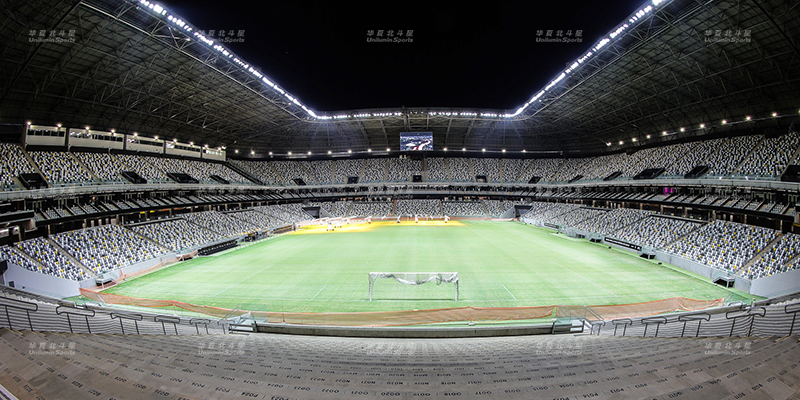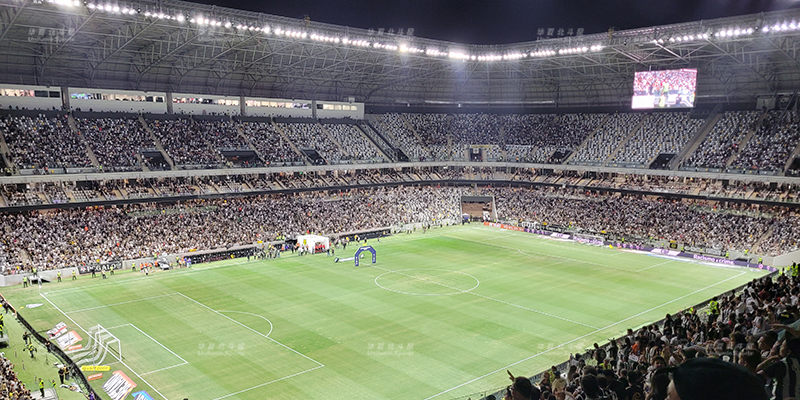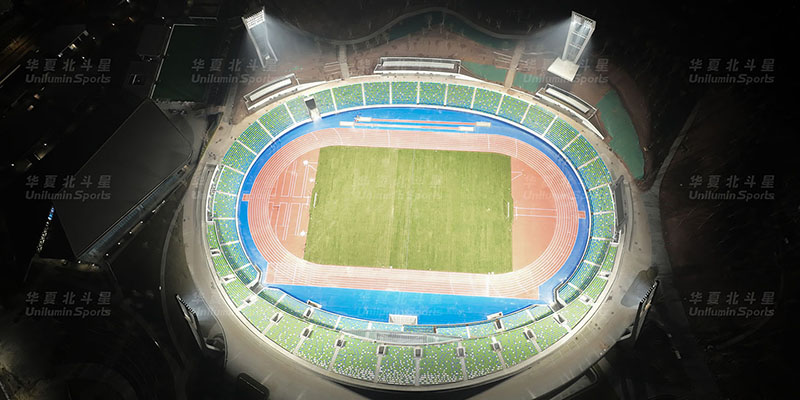 2025.04.15
2025.04.15
 160
160
In the development process of football matches, the lighting technology of football fields is like a hidden but powerful thread, continuously promoting the improvement of match experience and competitive level. From primitive lighting facilities in the early days to highly intelligent and precise lighting systems today, this technological field has undergone earth shaking changes, and every advancement profoundly affects every aspect of football matches.

Early football field lighting often used traditional high-pressure sodium lamps. Although these types of lighting fixtures can provide a certain degree of illumination, there are obvious shortcomings in key parameters. For example, the color rendering index (Ra) of high-pressure sodium lamps is usually only between 20-30, which means that the color it presents deviates significantly from the true color of the object. On the football field, the color of players' jerseys, the color of the football ball, and the field markings cannot present a realistic and bright color under high-pressure sodium lamps, which not only affects the visual experience of the audience, but also causes certain interference for players to quickly judge the position and trajectory of the ball on the field. Moreover, the start-up time of high-pressure sodium lamps is relatively long, usually taking 5-10 minutes to reach full illumination, which is extremely inconvenient in case of sudden interruptions during the competition and the need to restore lighting.
With the rapid development of technology, metal halide lamps have gradually become the mainstream choice for football field lighting. Metal halide lamps have significantly improved their color rendering index, generally reaching 65-90, greatly enhancing the color reproduction on the football field and allowing players and spectators to see more realistic and vivid images. In terms of illumination, metal halide lamps can also meet the basic needs of football matches, providing players with a relatively clear visual environment. However, metal halide lamps are not perfect. The problem of light decay is quite serious, and after a period of use, the luminous efficiency of the lamps will gradually decrease, leading to unstable lighting effects in the venue. Moreover, the energy consumption of metal halide lamps is relatively high, which means high operating costs for long-term lighting of large football fields.

In recent years, new lighting technologies represented by LED have emerged, completely rewriting the pattern of football field lighting. LED lighting fixtures have demonstrated overwhelming advantages in various parameters. The color rendering index can reach over 90, almost perfectly reproducing the true color of objects, making football matches as vivid as real scenes under lighting. In terms of illumination, LED lighting fixtures can easily achieve high power output, meeting FIFA's strict requirements for vertical illumination above 2000 lx for top-level events. At the same time, the energy-saving characteristics of LED lamps are very prominent, which can save 50% -70% energy compared to traditional lamps, greatly reducing the operating costs of football fields.
In the innovation process of lighting technology, Huaxia Beidou has achieved remarkable results. In terms of product performance and advantages, the lighting fixtures of Huaxia Beidou Star adopt high-quality aviation aluminum profiles, combined with advanced phase change heat dissipation technology and air convection structure design, effectively solving the heat dissipation problem under high-intensity lighting in sports venues. The full power surplus exceeds 20% of the heat dissipation area, ensuring that the fixtures have no attenuation for 10 years. Its lighting fixtures have high luminous efficiency, with sports lighting reaching Ra80 and luminous efficiency exceeding 160 lm/w.

In terms of lighting, it can achieve precise lighting according to the irregular shapes of different football fields and the special lighting requirements of matches, ensuring even and sufficient lighting on the field. The lighting fixtures also have multiple anti glare measures to create a comfortable competition environment for athletes. Through anti overflow light devices, zero overflow light pollution and waste are achieved, ensuring 100% projection onto the field. The built-in aluminum reflector increases reflectivity and reduces glare generation.
打开微信,点击底部的“发现”,使用
“扫一扫”即可将网页分享至朋友圈。
